한국응용과학기술학회 논문 검색
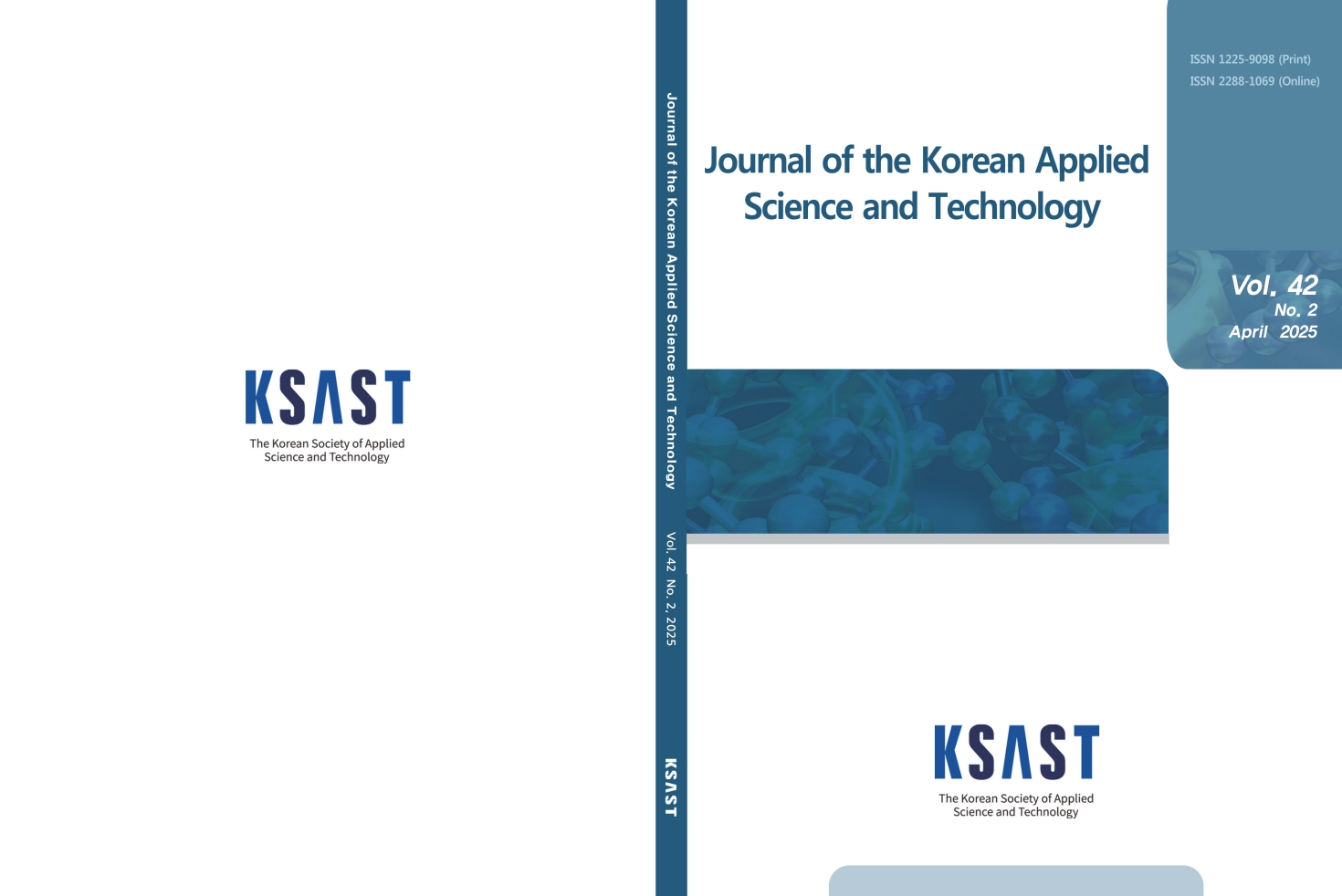
Evaluation of Pharmacological Properties of Nicotinamide Mononucleotide (NMN) for Cosmetic Applications
간행물 정보 : Vol. 42 No. 2, 2025년,
파일형식 : pdf

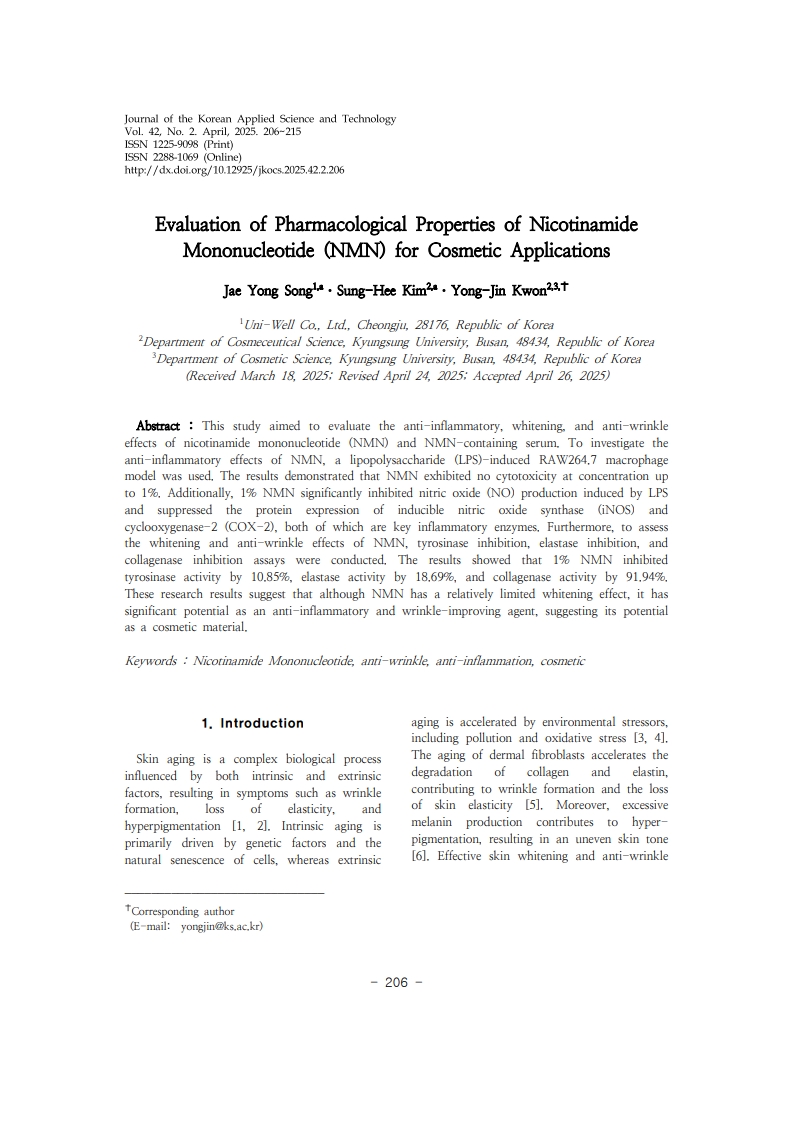
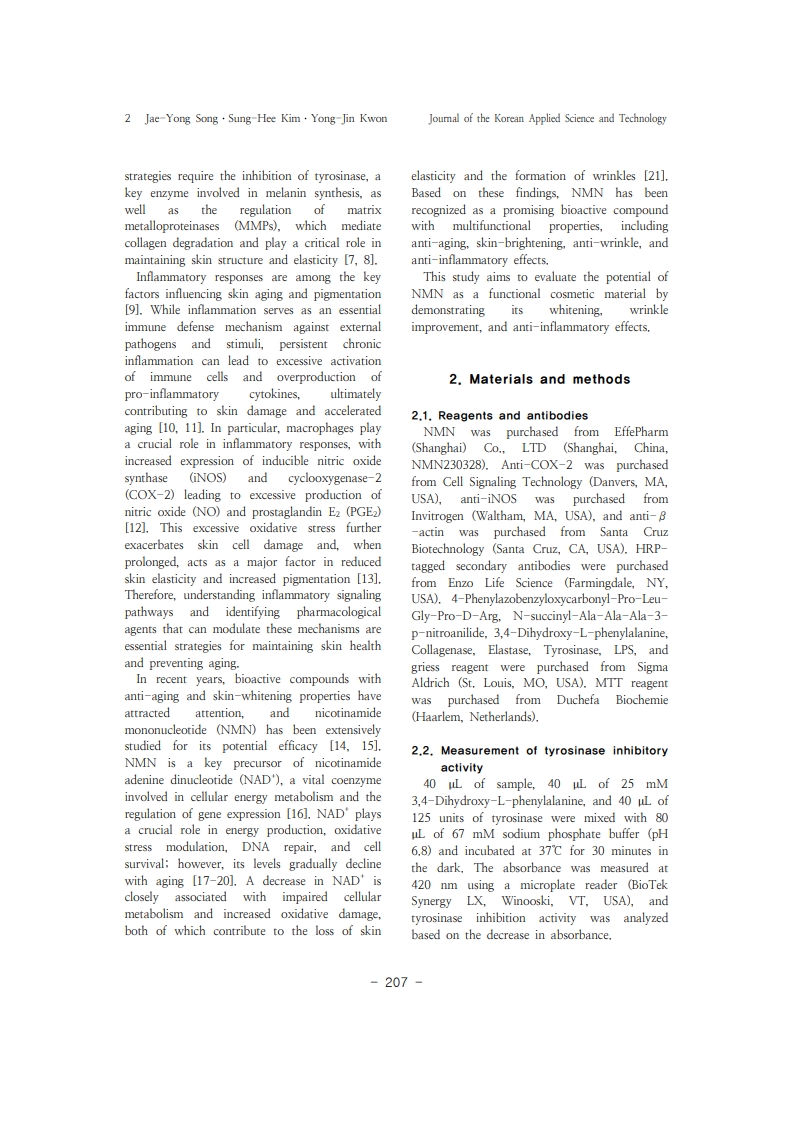
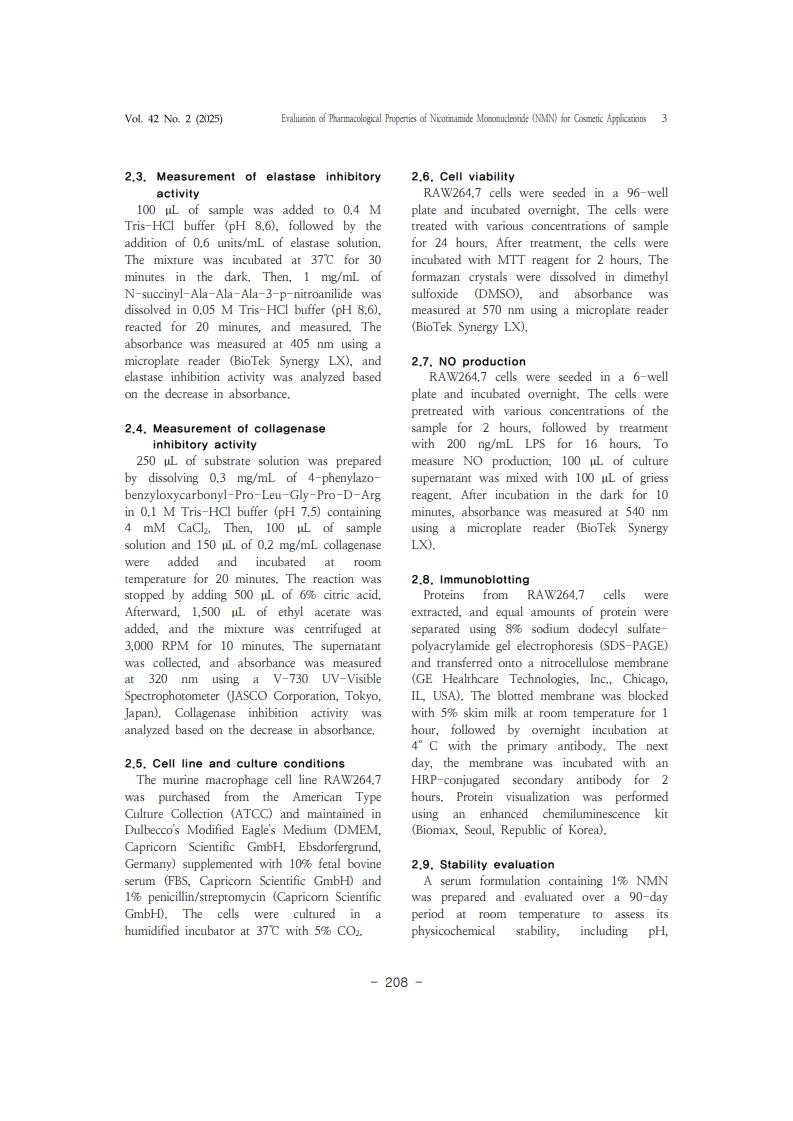
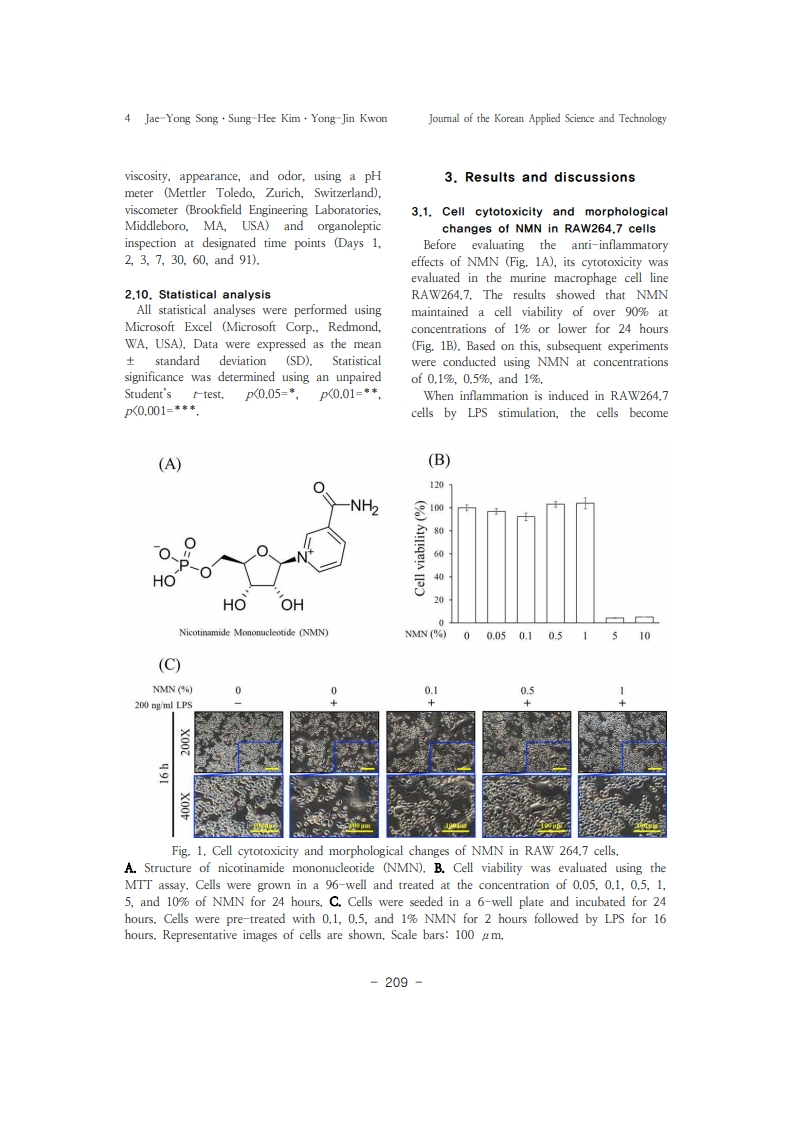
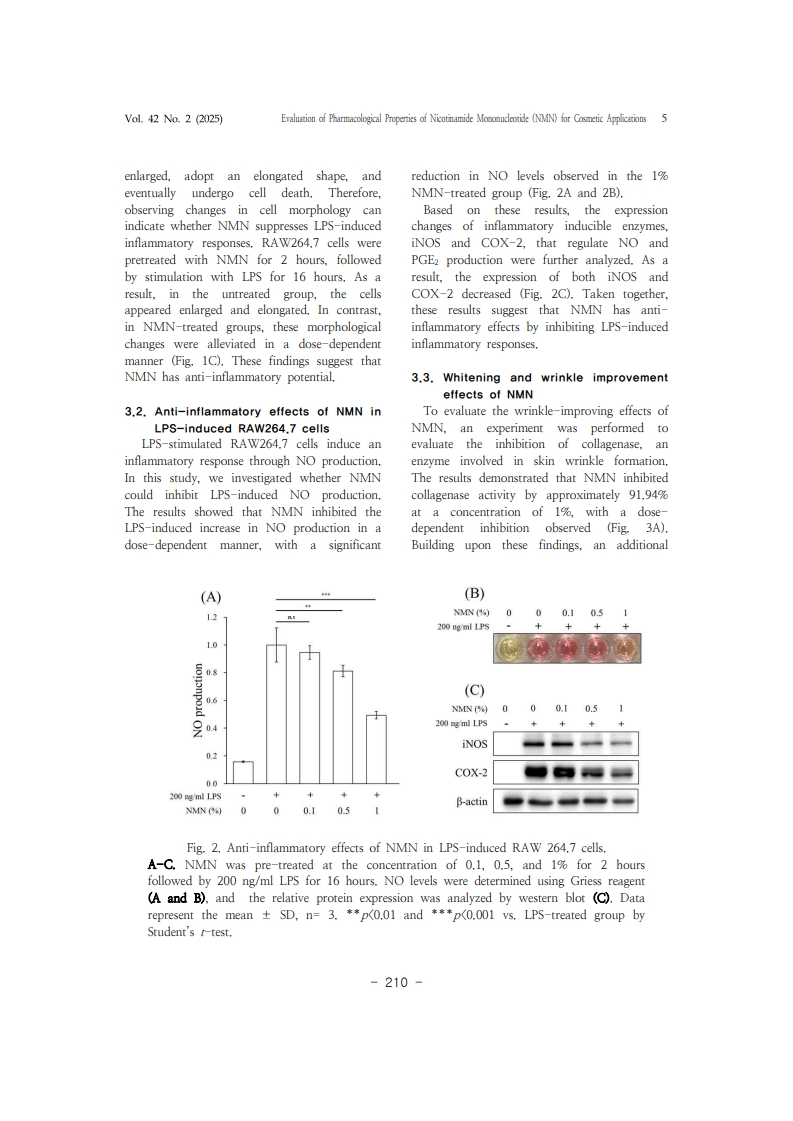
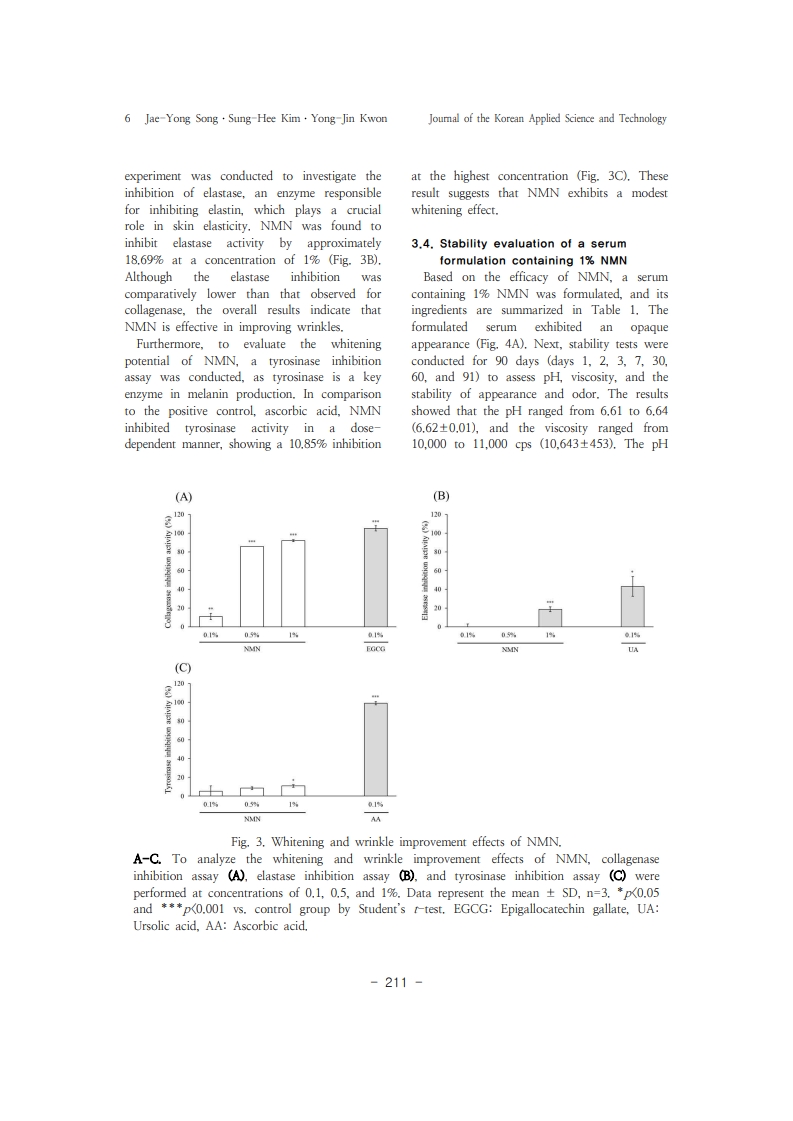
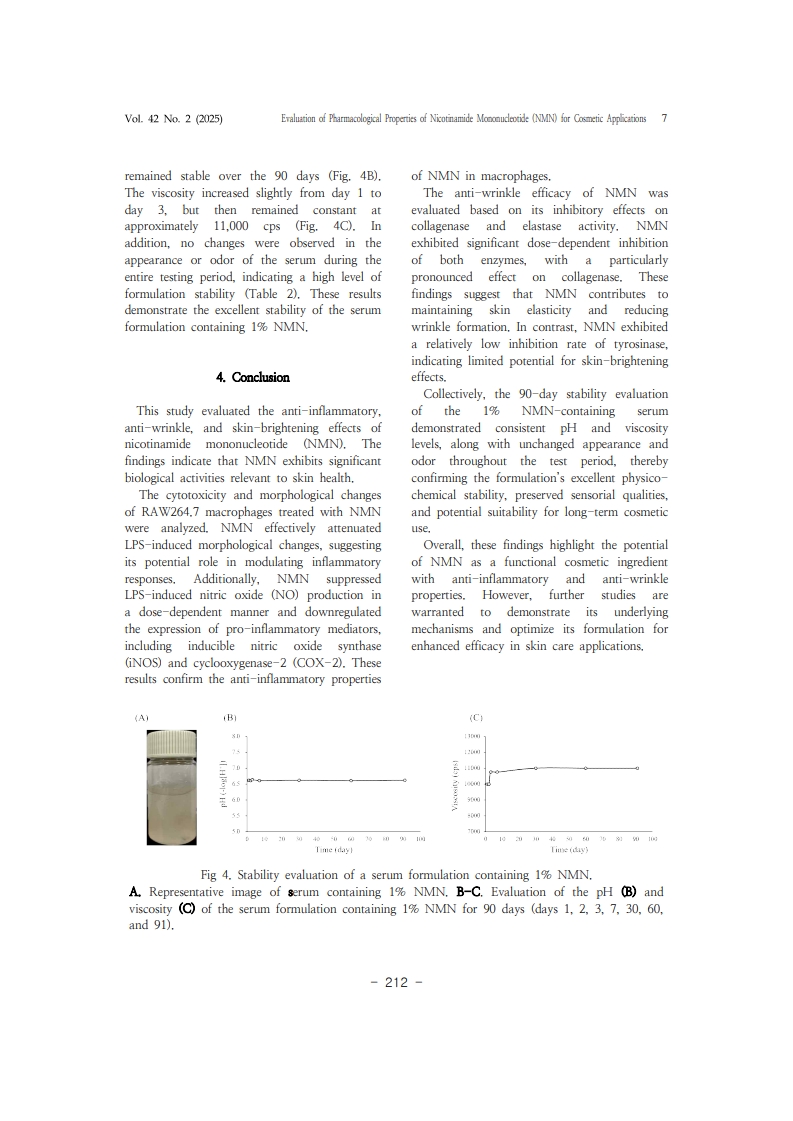
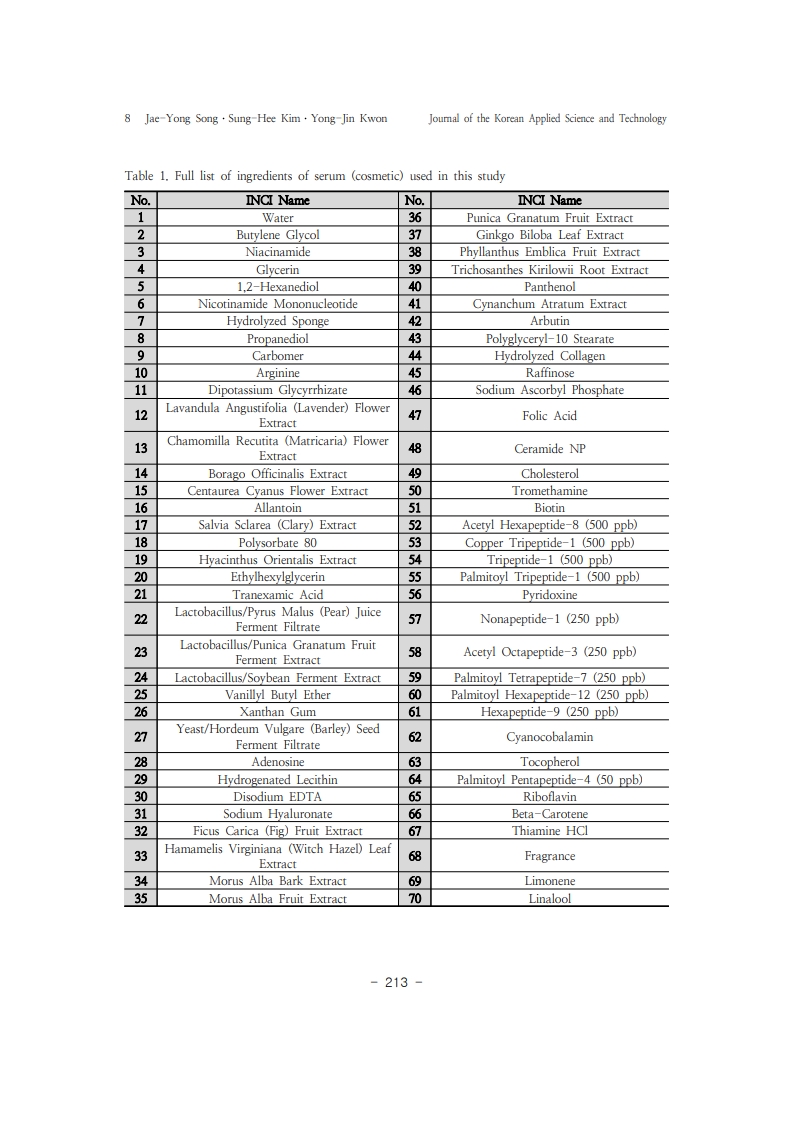

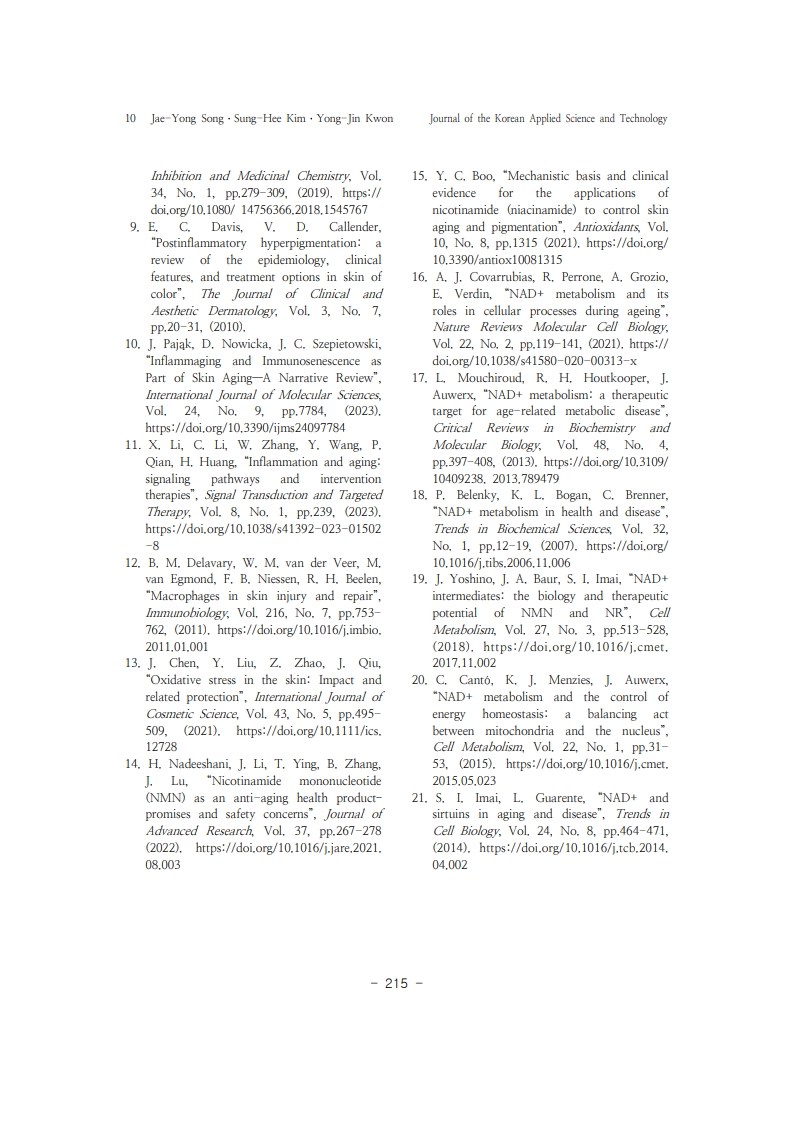
1. A. K. Langton, M. J. Sherratt, C. E. M. Griffiths, R. E. B. Watson, “A new wrinkle on old skin: the role of elastic fibres in skin ageing”, International Journal of Cosmetic Science, Vol. 32, No. 5, pp.330-339, (2010).https://doi.org/10.1111/j.1468-2494.2010.00574.x
2. J. W. Shin, S. H. Kwon, J. Y. Choi, J. I. Na, C. H. Huh, H. R. Choi, K. C. Park,“Molecular mechanisms of dermal aging and antiaging approaches” InternationalJournal of Molecular Sciences, Vol. 20, No. 9, pp.2126, (2019).https://doi.org/10.3390/ijms20092126
3. M. A. Farage, K. W. Miller, P. Elsner, H. I. Maibach, “Intrinsic and extrinsic factors in skin ageing: a review”, International Journal of Cosmetic Science, Vol. 30, No. 2, pp.87-95, (2008). https://doi.org/10.1111/j.1468-2494.2007.00415.x
4. M. Rinnerthaler, J. Bischof, M. K. Streubel, A. Trost, K. Richter, “Oxidativestress in aging human skin”, Biomolecules, Vol. 5, No. 2, pp.545-589, (2015).
https://doi.org/10.3390/biom5020545
5. J. Zhang, H. Yu, M. Q. Man, L. Hu, “Aging in the dermis: Fibroblast senescence and its significance”, Aging Cell, Vol. 23, No. 2, pp.e14054, (2024).
https://doi.org/10.1111/acel.14054
6. A. M. Thawabteh, A. Jibreen, D. Karaman, A. Thawabteh, R. Karaman, “Skin pigmentation types, causes and treatment—a review”, Molecules, Vol. 28,
No. 12, pp.4839, (2023). https://doi.org/10.3390/molecules28124839
7. K. Li, F. R. Tay, C. K. Y. Yiu, “The past, present and future perspectives ofmatrix metalloproteinase inhibitors”, Pharmacology & Therapeutics, Vol. 207,
pp.107465, (2020). https://doi.org/10.1016/j.pharmthera.2019.107465
8. S. Zolghadri, A. Bahrami, M. T. Hassan Khan, J. Munoz-Munoz, F.Garcia-Molina, F. Garcia-Canovas, A. A. Saboury, “A comprehensive review on tyrosinase inhibitors”, Journal of Enzyme 10 Inhibition and Medicinal Chemistry, Vol. 34, No. 1, pp.279-309, (2019). https://doi.org/10.1080/14756366.2018.1545767
9. E. C. Davis, V. D. Callender, “Postinflammatory hyperpigmentation: a review of the epidemiology, clinical features, and treatment options in skin of color”, The Journal of Clinical and Aesthetic Dermatology, Vol. 3, No. 7, pp.20-31, (2010).
10. J. Pająk, D. Nowicka, J. C. Szepietowski, “Inflammaging and Immunosenescence as Part of Skin Aging—A Narrative Review”, International Journal of Molecular Sciences, Vol. 24, No. 9, pp.7784, (2023). https://doi.org/10.3390/ijms24097784
11. X. Li, C. Li, W. Zhang, Y. Wang, P. Qian, H. Huang, “Inflammation and aging:signaling pathways and intervention therapies”, Signal Transduction and Targeted
Therapy, Vol. 8, No. 1, pp.239, (2023). https://doi.org/10.1038/s41392-023-01502-8
12. B. M. Delavary, W. M. van der Veer, M. van Egmond, F. B. Niessen, R. H. Beelen, “Macrophages in skin injury and repair”, Immunobiology, Vol. 216, No. 7, pp.753- 762, (2011). https://doi.org/10.1016/j.imbio.2011.01.001
13. J. Chen, Y. Liu, Z. Zhao, J. Qiu, “Oxidative stress in the skin: Impact andrelated protection”, International Journal of Cosmetic Science, Vol. 43, No. 5, pp.495-509, (2021). https://doi.org/10.1111/ics.12728
14. H. Nadeeshani, J. Li, T. Ying, B. Zhang, J. Lu, “Nicotinamide mononucleotide(NMN) as an anti-aging health product– promises and safety concerns”, Journal of
Advanced Research, Vol. 37, pp.267-278 (2022).https://doi.org/10.1016/j.jare.2021.08.003
15. Y. C. Boo, “Mechanistic basis and clinical evidence for the applications ofnicotinamide (niacinamide) to control skin aging and pigmentation”, Antioxidants, Vol.10, No. 8, pp.1315 (2021). https://doi.org/10.3390/antiox10081315
16. A. J. Covarrubias, R. Perrone, A. Grozio, E. Verdin, “NAD+ metabolism and itsroles in cellular processes during ageing”, Nature Reviews Molecular Cell Biology, Vol. 22, No. 2, pp.119-141, (2021). https://doi.org/10.1038/s41580-020-00313-x
17. L. Mouchiroud, R. H. Houtkooper, J. Auwerx, “NAD+ metabolism: a therapeutictarget for age-related metabolic disease”, Critical Reviews in Biochemistry and
Molecular Biology, Vol. 48, No. 4, pp.397-408, (2013). https://doi.org/10.3109/10409238.2013.789479
18. P. Belenky, K. L. Bogan, C. Brenner, “NAD+ metabolism in health and disease”,Trends in Biochemical Sciences, Vol. 32, No. 1, pp.12-19, (2007).
https://doi.org/10.1016/j.tibs.2006.11.006
19. J. Yoshino, J. A. Baur, S. I. Imai, “NAD+ intermediates: the biology and therapeutic potential of NMN and NR”, CellMetabolism, Vol. 27, No. 3, pp.513-528, (2018).
https://doi.org/10.1016/j.cmet.2017.11.002
20. C. Cantó, K. J. Menzies, J. Auwerx, “NAD+ metabolism and the control ofenergy homeostasis: a balancing act between mitochondria and the nucleus”,
Cell Metabolism, Vol. 22, No. 1, pp.31- 53, (2015).https://doi.org/10.1016/j.cmet.2015.05.023
21. S. I. Imai, L. Guarente, “NAD+ and sirtuins in aging and disease”, Trends inCell Biology, Vol. 24, No. 8, pp.464-471, (2014).
